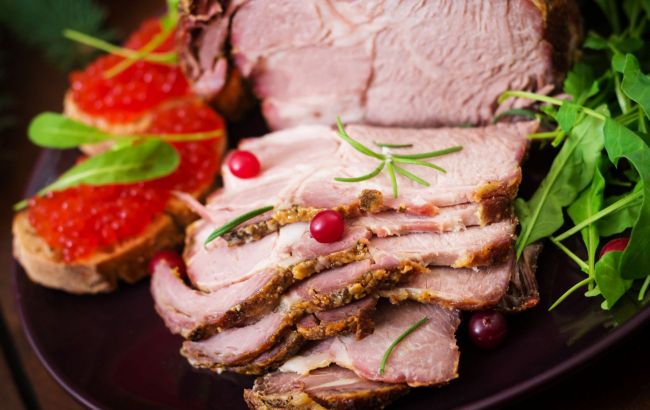How to roast meat without drying it out
 How to roast meat in the oven so that it is tender and juicy (photo: freepik.com)
How to roast meat in the oven so that it is tender and juicy (photo: freepik.com)
Roasting meat is always a true art. Nothing adorns a festive table like a beautifully roasted piece of meat that delights the eye and enchants with its flavor. But how can you make it juicy and tender without drying it out during roasting?
Ukrainian project Home Cooks explains how to properly roast meat for a festive table and prevent it from drying out.
Basic tips for roasting meat
Choosing meat
Pork, beef, veal, lamb, or chicken are the best options for roasting. Choose high-quality meat that isn’t overly fatty but has some marbling to retain juiciness.
Marinating
Meat can and should be marinated for better flavor and tenderness. Use oil, spices, herbs, lemon juice, or yogurt to make it juicier. Don’t marinate for more than 4-6 hours so the natural flavor of the meat isn’t overwhelmed.
Temperature before roasting
Before placing meat in the oven, let it sit at room temperature for at least 15–20 minutes. This helps it cook evenly and retain more juice.
Proper oven temperature
Roast meat at 180–200°C. If the temperature is too high, the outside will brown too quickly while the inside remains undercooked.
Meat thermometer
If possible, use a meat thermometer to monitor internal temperature. For most meats, the optimal internal temperature is 60–75°C. This ensures the meat is juicy.
Moist environment
Not to dry out the meat, you can use foil or a roasting sleeve. This will help retain moisture inside the meat, preventing it from drying out. At the end of cooking, you can remove the foil to allow the meat to brown nicely.
Let it rest
After taking the meat out of the oven, let it rest for 10-15 minutes so that the juices redistribute evenly, making the meat even juicier.
Tips
-
Roasting with vegetables is a great idea for a festive table. Vegetables roasted with meat enhance the flavor and taste.
-
You can roast meat with sauces (like barbecue or creamy sauce) to make it even tastier and juicier.
These simple tips will help you prepare a real culinary masterpiece for your festive table that will impress all your guests.

Meat should be well prepared before roasting (photo: freepik.com)
Pork roasted with rosemary and garlic
What you will need:
-
1 kg of pork (shoulder or loin)
-
4 garlic cloves
-
2 tbsp olive oil
-
1 tsp dried rosemary
-
Salt and pepper to taste
-
1 tsp mustard (optional)
-
1 tsp honey (for glazing)
-
200 ml white wine or broth
Preparation:
Thoroughly wash the meat, pat dry, and make several shallow cuts.
Slice the garlic thinly and insert the pieces into the cuts.
In a bowl, mix olive oil, rosemary, salt, pepper, and mustard (if desired).
Rub this mixture onto the meat thoroughly. Let it marinate for 20–30 minutes.
Preheat the oven to 180°C. Pour wine or broth into the roasting pan (this will help retain moisture).
Place the meat in the pan, cover with foil, and roast for 1–1.5 hours, occasionally basting with its juices.
15 minutes before it’s done, remove the foil and brush the meat with honey for a golden crust.
Remove from oven and let rest for 10–15 minutes before slicing.
How to store roasted meat
Store cooked meat in the fridge—but only after it has fully cooled. Placing warm food in the fridge can create condensation due to temperature differences, causing the meat to spoil faster.
Use foil or parchment paper to cover the meat—these prevent it from drying out. Plastic wrap is less desirable, as it can cause condensation.
Even better: place the roasted meat in an airtight container. You can also line it with parchment. This protects it from drying out and absorbing other odors in the fridge.
Meat can be stored in the fridge for 3–4 days at +2 to +5°C. If you need to keep it longer, freeze it. But freeze it only after it’s fully cooled to avoid repeated chilling.
Avoid reheating roasted meat in the microwave. Instead, reheat it in a frying pan with a few spoons of water or in the oven at 150–160°C, wrapped in foil.
If you roasted the meat with sauce, it is better to store the sauce separately. Otherwise, the meat can become soggy and lose its flavor.
If you roasted a large piece of meat, cut it into smaller portions after cooking and wrap each one separately in foil. This will make reheating more convenient.

